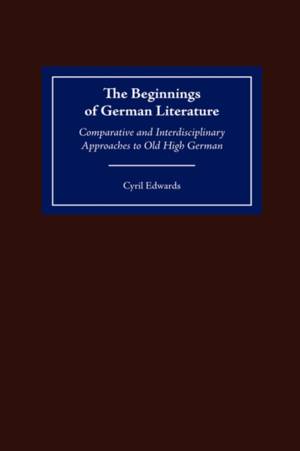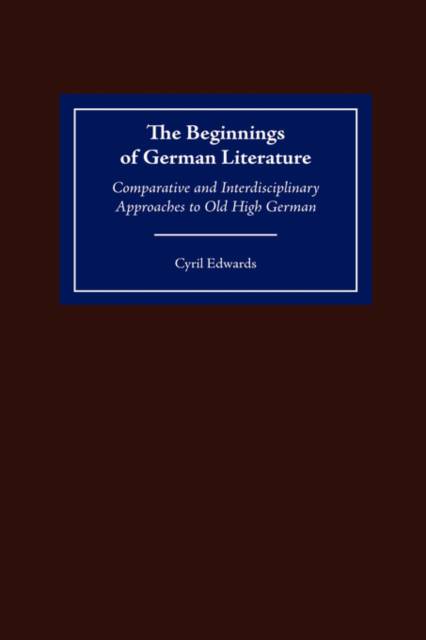
- Afhalen na 1 uur in een winkel met voorraad
- Gratis thuislevering in België vanaf € 30
- Ruim aanbod met 7 miljoen producten
- Afhalen na 1 uur in een winkel met voorraad
- Gratis thuislevering in België vanaf € 30
- Ruim aanbod met 7 miljoen producten
Zoeken
The Beginnings of German Literature
Comparative and Interdisciplinary Approaches to Old High German
Cyril Edwards
€ 177,45
+ 354 punten
Omschrijving
For the German-speaking peoples under the Carolingians (c. 750-950 AD), the dominant literary tongue was Latin, but during the period between the eighth and tenth centuries the dialects of Old High German in the south and Old Saxon in the north entered the realm of written languages. Cyril Edwards explores a number of instances in his book, beginning with a look at the recording and survival of the earliest continuous German texts, before turning to the specific examples. These are: the Wessobrunn Prayer, the earliest religious poem in German; the Merseburg Charms, pagan survivals in a Christian manuscript, summoning gods familiar from the Old Norse pantheon; the earliest traces of the love lyric; and the Ossian of the period, an ingenious forgery that was a cause célèbre in the nineteenth century, the Old High German Lullaby.
Specificaties
Betrokkenen
- Auteur(s):
- Uitgeverij:
Inhoud
- Aantal bladzijden:
- 215
- Taal:
- Engels
- Reeks:
- Reeksnummer:
- nr. 1
Eigenschappen
- Productcode (EAN):
- 9781571132352
- Verschijningsdatum:
- 15/07/2002
- Uitvoering:
- Hardcover
- Formaat:
- Genaaid
- Afmetingen:
- 163 mm x 238 mm
- Gewicht:
- 489 g

Alleen bij Standaard Boekhandel
+ 354 punten op je klantenkaart van Standaard Boekhandel
Beoordelingen
We publiceren alleen reviews die voldoen aan de voorwaarden voor reviews. Bekijk onze voorwaarden voor reviews.








